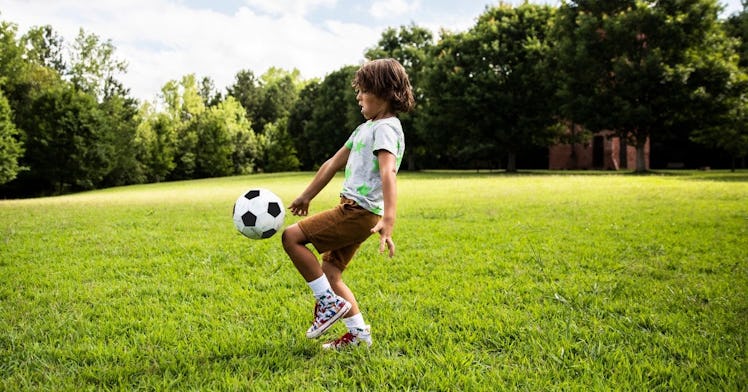Public Toilets and Playgrounds: Here’s What Makes These 12 Cities The Most Park-Friendly in America
A new report ranking big cities on how park-friendly they are shows that big cities (and the families that live in them) can really have it all.

You don’t have to travel to the middle of nowhere to enjoy a slice of nature — big cities have green spaces too! The Trust for Public Land just released its 2022 ParkScore report, an index of the parkiest metropolitan centers in America.
Research has shown that green space is essential to both physical and mental health, especially for marginalized populations and adolescents. People who live in urban areas and visit local parks have improved mental health, lower cortisol levels, and less stress, anxiety, and depression. But they’re not just good for our brains.
Areas of green space are also vital environmentally. Parks and green spaces help make communities better able to withstand the effects of climate change by providing shade from increasingly high temperatures, runoff areas for stormwater to prevent flooding, and reducing carbon emissions making for cleaner air for city-dwellers.
The report examined the 100 largest cities in the country by population and ranked them in five different categories: access (walking distance and pedestrian-safe roadways and bridges), acreage (median park size and percent of city land used for parks), amenities (restrooms, dog parks, sports facilities, playgrounds, and seniors areas), equity (ease of access for marginalized communities compared to predominately white communities), and investment (public and private spending and volunteer hours worked in maintaining or improving parks).
After crunching numbers and analyzing data, the Trust for Public Land named these the best cities for parks and recreation in the U.S.:
- Washington D.C.
- St. Paul
- Arlington
- Cincinnati
- Minneapolis
- Chicago
- San Francisco
- Irvine
- Seattle
- New York City
- Portland, Oregon
- Boston
The numbers make it clear: these 12 cities, from the east coast of New York City to the west coast of Portland, Oregon, have lots of green space and invest lots of time and money into them. Ninety-eight percent of Washington D.C. residents and 99% of St. Paul residents live within a 10-minute walk from a park or natural area, while San Francisco spends an average of $240 per capita on parks and recreation areas, almost 2.5 times the national average of $98 per capita.
Irvine leads the way in acreage and median park size, dedicating 37% percent of the city to its 306 parks, and Portland has the most dog parks, with 5.8 for every 10,000 residents. Portland also runs the pack in access to public bathrooms — an oft-overlooked amenity in public life — hosting 6.1 public restrooms for every 10,000 people.
The ParkScore mapping function allows users to view areas dedicated to parks and also to see where there are gaps in inaccessibility, making it a valuable tool for city planners and park advocates alike. To see the full list of the 100 biggest cities with the best parks and recreation systems, make sure to check out the full report.